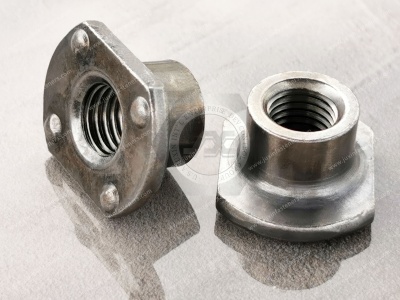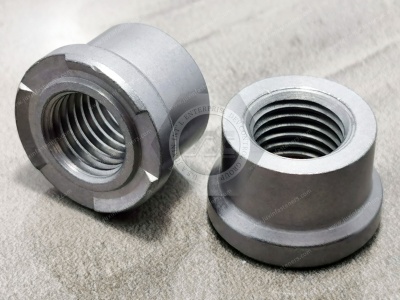Call Us
+86 136 6007 9809
Call Us
+86 136 6007 9809
May. 28, 2024
Hex Flange Welding Nut: Installation, Selection, and Industry Application Solutions
What is a Flange Welding Nut?
A flange welding nut is suitable for welding, generally made from materials that can be welded and relatively thick. Welding involves melting metals at high temperatures to mix and then cooling them, often with alloy additions, creating a solid bond. The standards for flange welding nuts include GB, ISO, DIN, BS, and JB.
For high-quality welding nuts and professional technical support, don't hesitate to contact us at adelajonly@gmail.com or visit our website at [Juxin Fasteners](https://www.juxinfasteners.com).


1. Advantages: High strength after welding, broad usage range, suitable for various thicknesses.
Ideal for high-strength, non-removable connections
2. Disadvantages: High-temperature welding may deform connected parts.
Some metals, like aluminum and magnesium, require unique welding methods.
Installation Methods for Flange Welding Nuts
1. Choose the Appropriate Nut: Based on the material and requirements of the workpiece, select the right flange welding nut. Flange welding nuts' large contact area prevents crushing and makes them suitable for low-strength materials.
2. Set Welding Parameters: To eliminate defects, adjust welding parameters according to the weld's fusion size. Pre-welding cleaning of the workpiece surface is essential.
3. Installation Steps: Ensure clean and flat connection surfaces. Place the nut into the hexagonal hole of the flange and tighten it with a wrench until the required torque is achieved.
Selection Plan for Welding Flange Nuts
1. Determine Thread Type and Size: Common thread types are imperial and metric; choose the appropriate size and specification.
2. Select Suitable Nut Material: Choose carbon steel, stainless steel, or alloy steel nuts based on the environment. Carbon steel is suitable for general environments, stainless steel for corrosive environments, and alloy steel for high-temperature and high-pressure environments.
3. Installation Considerations: Ensure clean and flat connection surfaces and use correct assembly methods and torque to avoid deformation.
Applications of Welding Flange Nuts
1. Machinery: Used for threaded connections, enhancing fastening strength and stability, suitable for high-load and high-vibration environments. They are applied in machine tool fixtures and mold fixtures.
2. Automotive Manufacturing: It is used for body and engine part connections, providing reliable connections and preventing loosening from vibration and impact. It is also applied to car seats, doors, roofs, etc.
3. Shipbuilding: These are used for pipe connections, fastening, and sealing. They are also used in the installation of ship engine room equipment and pump valves.
4. Construction: Used for steel structure connections, providing reliable connections for large-span and high-rise buildings, and applied in foundation fixing, door and window installation, etc.
In summary, welding flange nuts are essential fastening components in machinery, automotive, shipbuilding, and construction fields. Proper selection and use of flange welding nuts ensure sealing and reliability, enhancing the safety and stability of equipment and piping systems.
Contact Us
Tel.:
+86 020 8621 0320
+86 020 3121 6067
Technical Support:
Navigation
SEND INQUIREY